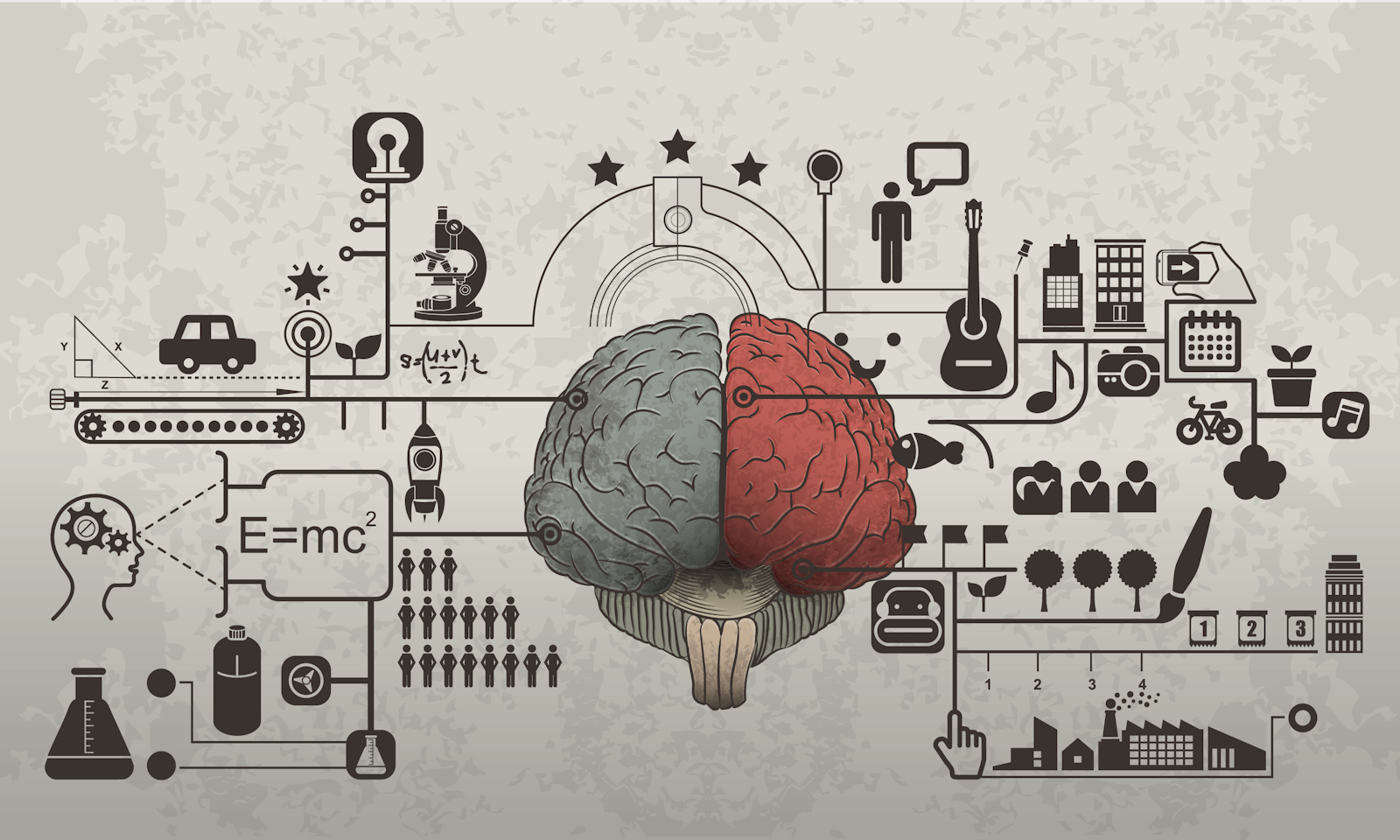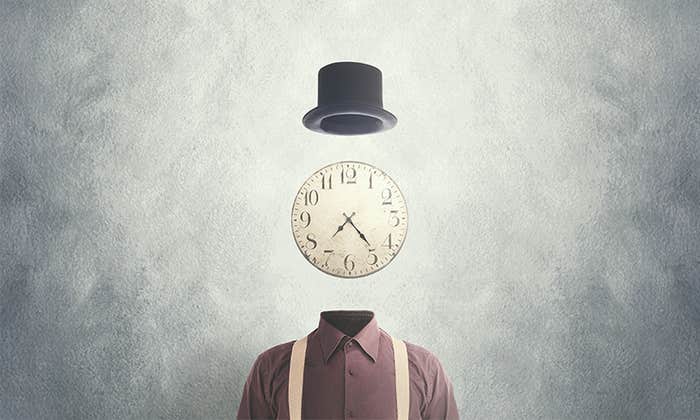I remember all too well that day early in the pandemic when we first received the “stay at home” order. My attitude quickly shifted from feeling like I got a “snow day” to feeling like a bird in a cage. Being a person who is both extraverted by nature and not one who enjoys being told what to do, the transition was pretty rough.
But you know what?
I got used to it. Though the pandemic undoubtedly affected some of your lives more than others, I know it touched every one of us in ways we will never forget. And now, after two years and counting, I am positive that every person reading this is fundamentally different from when the pandemic started.
Because that’s how our brains work. They are molded by our experiences so that we can fit into all kinds of different situations—even the decidedly suboptimal ones.

This is actually one of the most human things about all of our brains. In fact, according to some contemporary views of human evolution, our ancestors underwent a “cognitive revolution” precisely because they were forced to adapt. Based on evidence suggesting that the size of our ancestors’ brains increased following periods of extreme weather instability, one popular explanation for our remarkable flexibility is that the hominids who were not able to adapt to environmental changes didn’t survive. In other words, the brains of modern humans were selected for their ability to learn and adapt to changing environments.
But one of the major costs of this remarkable flexibility is that humans are born without any significant preconceived notions about how things work. If you’ve ever had a conversation with someone about an event you both participated in that left you feeling like one of you was delusional because your stories were so different, you might have a hint about how much your experiences have shaped the way you understand the world around you. This can be insanely frustrating because—let’s face it—our own brains are really convincing when they construct our personal version of reality. Remember the Dress? Though it can feel like gaslighting when someone has a different reality from yours, it’s also entirely possible that you both were reporting your version of the truth. At the end of the day, the way people remember a story reflects differences in the way they experienced the original event. The scientific explanation for this boils down to differences in perspective.
One of the most essential ways your experiences shape your brain is through a process called Hebbian learning. In essence, Hebbian learning is the biological mechanism that allows your brain to keep a running set of statistics about how frequently things occur in your environment. Much like sports teams keep statistics of their players and use them to make decisions about who to start and who to trade, your brain has a way of “counting” the frequency of occurrences of different types of events and using this system to figure out what’s most likely to be happening, given the incomplete information it receives.
Fortunately, your brain’s way of taking statistics doesn’t require any counting on your part. Instead, the work happens in the connections between the gossipy neurons—in the spaces that determine who is talking to whom, and how loudly. Timing is really important for organizing such communication. As it turns out, it’s also really important for learning. When two neurons in close proximity become excited at approximately the same time, the connections between them will strengthen, increasing the likelihood that the message of one will be picked up by the other. Though the actual principles of Hebbian learning are a bit more nuanced than this, I always remembered the catchy slogan I first learned as an undergrad: “Neurons that fire together, wire together.” And the more often this happens, the stronger the connection between the two neurons will grow. This is your brain’s way of connecting the dots. It assumes that if events A and B virtually always occur at the same time, they are part of the same “neural event.” Once this happens, even if your brain only gets evidence that A is going on in the outside world, it is likely to assume that B happened as well, and will create that experience for you.
Our own brains are really convincing when they construct our personal version of reality.
I want to be specific about what “counts” as an experience when it comes to developing your perspective. Put simply, you learn from all of your neural experiences. From your brain’s perspective, it doesn’t matter whether the signals passing through it originate from something you’ve seen in the outer world, a daydream fantasy, or a deliberate attempt to imagine your potential future. Each of those corresponding electrical storms shapes the landscape of your brain’s database.
One experience that almost all human beings share, which is known to have a pervasive influence on your mind and brain, is the language or languages we speak. This is because language is so central to the way we think, feel, and behave that we spend the majority of our waking hours using it.
If you do not know more than one language, or if your second language knowledge is limited, or acquired later in life (for example, post-adolescence), your brain is more narrowly tuned to your first language than if you have more diverse language experiences. One benefit of this is that your brain is likely better prepared to use that single language than the brain of someone who learned more than one language would be. Roughly speaking, the reason for this is that people who speak multiple languages have more options to consider when using their statistics to comprehend or produce one language. They need to resolve competition between them before using any specific language. This means that it takes them a fraction of a second longer to access any piece of linguistic information they need to use, even in their most proficient language.
But there are also benefits to being broadly exposed to different types of statistics. Not only do people with exposure to multiple languages have a richer set of behaviors to choose from, they are also likely to consider more information when deciding how to behave—such as which of their languages they think is most appropriate in the current context. But the cost of this consideration of diverse ways of responding “in the wild” can certainly add up. In short, having a brain that is more widely exposed may slow down processing in any particular environment or context, but it also allows a person to be prepared for a larger number of situations.
Most of us understand that it’s much easier to learn languages when we are children than it is to pick one up as an adult. This raises the question: How much learning happens in the earlier years of life, and how much can we adapt to later? The short answer is that there are different windows of adaptation in different parts of the brain. To simplify, we can sort brain regions into three types, based on how much, and for how long, they are open to experience. The first type, made up almost entirely of the parts of the brain that regulate the functions that keep you alive, are experience-independent. These are the parts of the brain that regulate your critical functions like breathing, heart rate, and body temperature, which do not vary much across different environments.
Next we have the experience-expectant regions. These are the parts of the brain that are predestined to learn to interpret specific types of information about the world “out there,” because they are hard-wired to receive information from our senses. For instance, in typically developing babies, light coming in through the eyes is carried to the occipital cortex at the back of the brain, sounds coming in through the ears are carried to the auditory cortex in the temporal lobes on the sides of the brain, and smells coming in through the nose are processed by the olfactory bulb, located at the bottom of the front of the brain. The fact that we have to learn to recognize the things we see, hear, and smell allows human babies to develop expertise in the environments they were born into.
However, many of the experience-expectant regions also have “critical periods” for receiving input. At the beginning of life, they are waiting for data and are incredibly malleable. But as you age and these areas amass information about the world around them, they become more and more entrenched in the processing of the kind of things they expect to see and are less influenced by new experiences in the outside world.
To correct the shortcuts in our brains, we can expose ourselves to diverse, real-world experiences.
Fortunately there are parts of our brain that remain malleable over much of our life span. These are the experience-dependent parts of the brain. Among them are most of our cortical “association” areas, including those that allow us to acquire new vocabulary words throughout our life. One of the most critical experience-dependent regions is the frontal lobe, which supports much of the flexible behavior that characterizes human adaptability. The basal ganglia nuclei are also experience-dependent. In fact, they are arguably among the most adaptable brain regions because they are rich in the dopamine communication signals that increase neural plasticity. This is critical for shaping your brain’s decision-making processes.
Unfortunately, these experience-dependent regions can also lead us down some blind alleys: For example, they shape our implicit biases around race, age, gender, and sexual orientation—to name a few. Even though these biases involve the way we learn to associate higher-level concepts that occur at the same time, or in the same context, with one another, they can still influence our early, perceptual understanding of the world in disturbing ways.
One glaring example of this, which has been repeatedly demonstrated in laboratories around the world, in different populations and under a variety of conditions, is that people are more likely to report seeing a weapon when an ambiguous object is presented next to a Black face (in space or time) than when it is presented next to a white face. The effect was first demonstrated by Keith Payne in 2001. Across two experiments, Payne showed 60 non-Black participants a series of black-and-white pictures of tools or handguns, flashed quickly on the screen for one-fifth of a second, and asked them to indicate what they saw. The catch was that in both experiments, a picture of a Black or white male face was presented briefly before each to-be-recognized object. The research participants were told that the faces were just a cue that the object was coming; they were not expected to relate to the objects in any way, and in fact they didn’t. Black and white faces were presented equally often before both tools and handguns. Despite this, Payne’s participants found it significantly easier, based on their reaction times, to recognize a handgun when it was presented after a Black face than after a white face. The gun was also more easily recognized than the tool following the Black face, though both were equally easy to perceive when they followed the white face.
Though the size of this effect was pretty small, what it reflects about learning and the brains of the participants is largely important. The fact that guns shown after Black faces were the easiest thing in the experiment to recognize suggests that, on average, the neural databases of the participants contained a strong enough link between Black faces and guns that a shortcut is created in their brains. In other words, the most straightforward explanation for why people were faster to recognize a gun following a Black face is that when they saw the Black face in isolation, their brains had already started to fill in the blank and construct the concept of a weapon.
The deadly consequences of this are obvious to anyone with access to the news. And unfortunately, one critical question that is largely unanswered by this original research is: How do we fix it? One place to start is to figure out where the data that drives these biases comes from. Even though plenty of Americans own guns, it’s difficult to believe that the average college kids in these studies had many (or any) real-life experiences with Black men and guns. So, where do these shortcuts come from? To put it simply, the less experience you have in real life with a particular type of person, place, or thing, the more likely it is that your brain’s database entry for that topic is based on what you see on television, or read about in the news, on social media, or in fictitious depictions. And so, if the Black faces you see on television are more likely to be holding a gun than a stethoscope, your brain will assume that this is true of the world and incorporate it into the experience-based lenses through which you see.
In this way, many of our brains literally become shaped by the systemic biases of our society as we consume the versions of reality created by others. And these biases can influence the way we understand the world in ways that are fast and automatic. Which brings me to another important distinction—the people who participated in this research and have these types of shortcuts in their brains do not necessarily hold conscious, explicit ideas about what kinds of people carry guns. In fact, your explicit beliefs and your experiential database are perfectly capable of contradicting one another.
You might think of implicit bias as the result of an over-adaptation that occurs when a brain becomes entrenched in an environment that is sufficiently narrower than the one you would like to operate in. And being aware of this kind of over-adaptation seems even more relevant as we begin to emerge from our narrower-than-usual pandemic isolation bubbles. To correct the shortcuts in our brains, we can expose ourselves to diverse, real-world experiences and allow narratives told from different points of view to shape us. If we can become more intentional about what kinds of experiences we feed our brains, we can help to shape the ways our future selves adapt to the world. ![]()
From The Neuroscience of You: How Every Brain Is Different and How to Understand Yours by Chantel Prat, Ph.D., published on August 2, 2022 by Dutton, an imprint of Penguin Publishing Group, a division of Penguin Random House, LLC. Copyright (c) 2022 by Chantel Prat.
Lead image: Doggygraph / Shutterstock




























